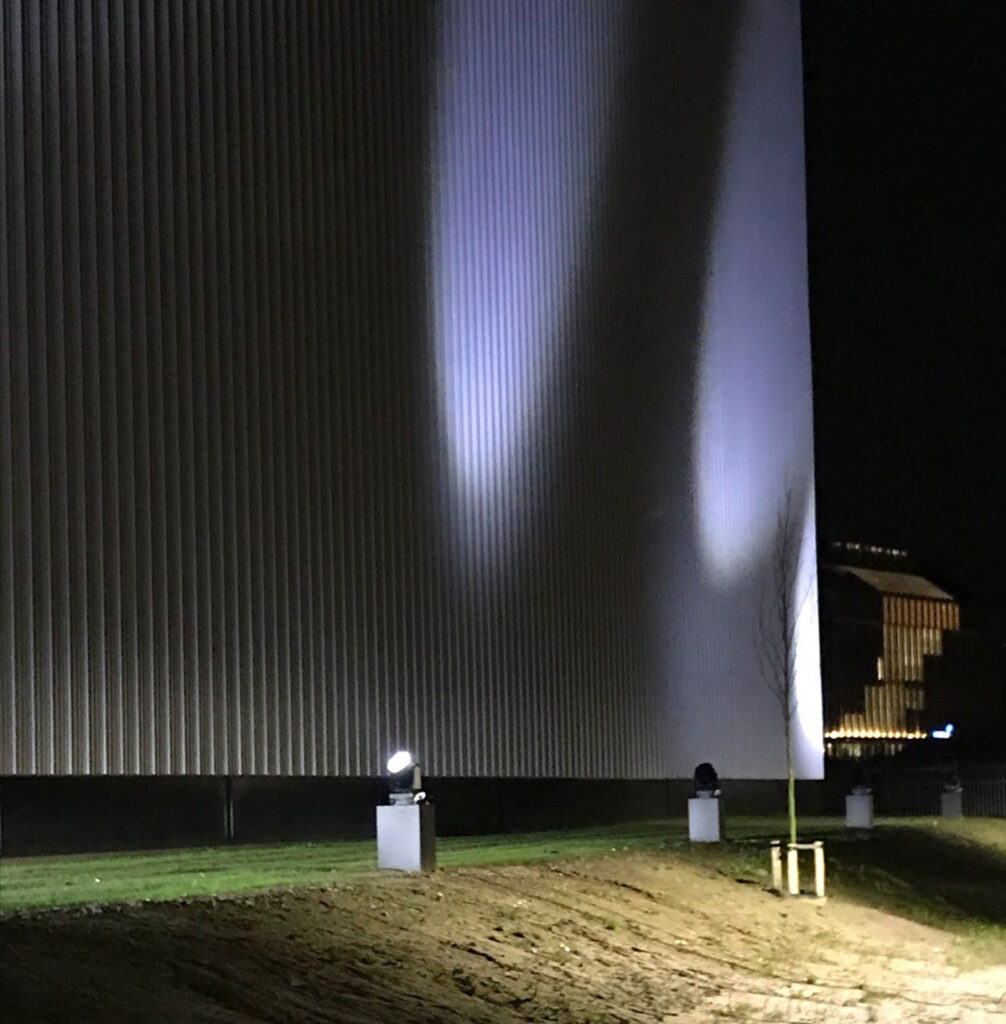Light art installation at Collection Center of the Netherlands runs each morning and evening.
The new Collection Center of The Netherlands, or CC NL, is one of the most extraordinary repositories anywhere. Four different museums in The Netherlands, including the world-renown Rijksmuseum, use the new facility as a storehouse for a large proportion of their collections. The art archive is celebrating with a piece of art of its own, a permanent light installation across multiple façades of the building created by light artist Herman Kuijer using Elation Proteus Rayzor 760™ luminaires.
In 2018, Kuijer, known for light installations around The Netherlands since the late 1970s, visited the Elation booth at the ISE fair in Amsterdam, where initial discussions of the project took place with Elation Key Account Manager for Benelux Bert Schmeits. During a subsequent visit to the Elation showroom in Kerkrade, it became clear to the artist that he could realize the creative ideas he had in mind for the building using Elation lighting. After various tests and demos on location at the CC NL facility, the project was realized using 28 Proteus Rayzor 760 moving heads, a 7,200-lumen wash light housing seven 60W RGBW LEDs and 5- to 77-degree zoom.
Ever-changing compositions, ever-flowing time
The four-story, nearly 25-meter high storage facility, often referred to as the physical memory of The Netherlands, is located in the city of Amersfoort. The building’s façade, made of Kalzip aluminum with vertical seams that create extra shades, proved an excellent canvass for Kuijer’s art. Lined along multiple sides of the building and mounted on steel bases produced by CMS (Custom Made Steelproducts) of the Netherlands, the Proteus Rayzor 760 fixtures project beams of soft white light that move very slowly in random directions across the building’s exterior. Variations in the direction and intensity of the light, as well as the expanse of the beams and the slow speed of their motion, give rise to subtle, ever-changing compositions.

“The good thing about the Proteus Rayzor is that they are able to withstand the Dutch weather without any protection,” Kuijer comments. “And secondly, they are capable of making these very slow movements which are crucial in this work I only use moving white light of which the intensity and the size of the beams are changing through a random program. Because of the random programming, the images that appear on the walls are permanently changing and always unique. The light casts a soft shroud over a hard building.”
He continues, “The four different museums that store their collections inside the building are trying to slow down time by conserving their art pieces. On the outside, the light represents ever-flowing time.”
Every morning and evening
The art installation, which debuted on 20 January 2021, is visible every morning and evening. The Elation lights were supplied via Output of Den Bosch (Netherlands) and installation was realized by Vidi-Square from Zandhoven in Belgium. “I was very lucky to work with Vidi-Square who delivered excellent service,” the light artist said. “They put me in contact with Painting with Light whose Jeroen Opsteyn did the programming for me. We first prepared the programming on screen in their studio then executed the final programming on site.”
Collection Center of The Netherlands also stores works of art from the Holland Open Air Museum, Paleis Het Loo Museum, and the Cultural Heritage Agency of The Netherlands. The 31,500 square meter archive is a unique collaboration among the four cultural institutions and includes facilities for administration, conservation and research. Some 3,700 square meters of solar panels make the building completely energy self-sufficient – an energy source that also powers the light art installation.
Photos: © Rijksmuseum/Cris Langemeijer